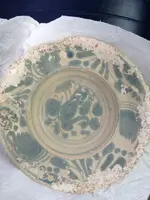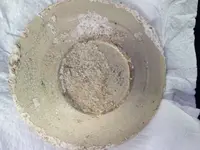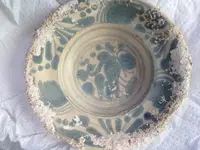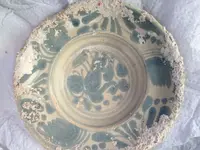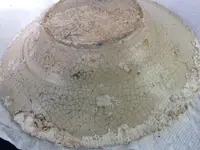Majolica came to Europe from the Middle East through Moorish Spain and got its name from a Spanish town. Italian maiolica (or majolica) was named by the Italians after the Spanish town and port Majorca (spelled Mallorca in Spanish) from which Italy first imported the ware. The Spanish; who developed Majolica, made it to imitate Chinese porcelain but were faced with limitations. First, they were limited to darker clays native to the region and second, they were limited on fuel so could not fire to the higher temperatures that Chinese porcelain requires. They solved the problems by using a tin-glaze which was an opaque glaze to cover the darker clay body and create a white background on which work. They also discovered that the bright colors they desired required low firing and would burn out at higher temperatures. So... basically Maiolica is a type of low-fire ceramic earthenware covered with an opaque white tin glaze and decorated with colored pigments. Medieval potters discovered that a white tin based glaze was more stable in the firing process than transparent lead glaze and the white surface was ideal for elaborate painted decoration. This type of pottery is also known by the names: majolica, faience, delftware, and tin-glazed pottery.
Your find is clearly Spanish Majolica but to try and narrow down time period and maker would be very difficult unless it has a makers mark on the base which it doesn't look like there is one. Makers marks were used less often as larger numbers of majolica wears were produced. I have a similar Majolica Plate and it came from a 1650's period shipwreck of Spanish origin. You probably knew all of this info from looking online yourself... just thought i would put it out there in case you didn't...

